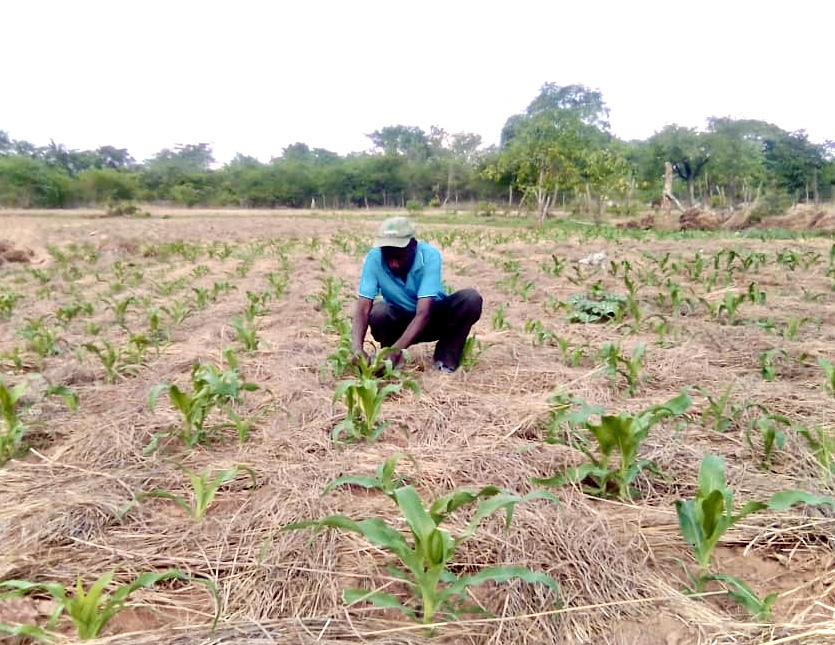Can the Pfumvudza conservation agriculture programme deliver food security in Zimbabwe?

It looks like it’s going to be a good harvest this year in Zimbabwe. Early crop assessments suggest that there will be a bumper crop of maize, perhaps the highest since the early 1980s at 2.8 million tonnes, planted across 1.9 million hectares. The season saw heavy rains throughout the country. As a result there is much optimistic talk of national food security for the first time since 2016. This would be exceptionally good news, especially given the dire situation in the wider economy and the challenges of importing food during the pandemic.
Some are claiming that this success is because of the promotion of a high profile conservation agriculture technique (now branded Pfumbvudza/Intwasa in Shona and Ndebele), involving the digging of pits as small planting basins to concentrate water and nutrients. There has been a major push by the state, with high-level political backing. The national drive has been backed by international agencies, including many donors and the UN’s FAO, and the Pfumvudza programme has been touted as the nation’s saviour, aimed at achieving the elusive goal of national food security after years of food imports due to successive droughts.
The president, Emmerson Mnangagwa, is a big fan, and it has been promoted vigorously by the new minister agriculture, Anxious Masuka, and his enthusiastic Permanent Secretary, John Basera, along with all MPs and local officials. Enlisted as part of a technocratic renewal and revival of the economy, Pfumvudza has taken on a political role with substantial political investment from the ruling party, ZANU-PF.
Pfumvudza is not a new innovation. Conservation agriculture has been hyped in particular by the FAO and a number of NGOs and donors, over a number of years, both in Zimbabwe and the region, with decidedly mixed results. So what does Pfumvudza involve?
Originally promoted by Brian Oldrieve of Foundations for Farming in Zimbabwe since his early experiments on Hinton Estate in the 1980s, the approach has taken on an evangelical tone, with the required mulch in the pits described as ‘God’s blanket’ and the practice being promoted as ‘God’s way’. The energetic extension of particular packages of agricultural production combined with religious zeal of course has longer precedents in Zimbabwe. E.D. Alvord, the American missionary, who promoted improved agricultural practices from his position of agriculturalist in the Native Affairs Department from 1926 to 1950, promoted in his book, The Gospel of the Plow.
Conservation agriculture is founded on several core principles, including practising minimum soil disturbance or tillage; having permanent soil cover by using organic mulch and using crop rotations and intercropping cover crops with main crops. In Zimbabwe the practice involves the digging of shallow pits using hoes and using mulch to cover the growing plants. The Pfumvudza programme has designed a highly specified package involving the requirement to prepare two 39 x 16 m plots (0.06 ha) for grains (mostly maize, and some sorghum in some parts of the country) and a third plot for soya beans, sunflower or another commercial crop for sale. Pits of a certain depth and spacing are required to be dug and mulched, and seeds along with fertiliser (officially, Compound D and AN top dressing) are supplied by government. The whole operation has been supported by over 5000 extension workers with new motorbikes issued and ambitious targets have been set.
Huge claims have been made about the potentials, with expectations of one tonne of maize per grain plot, allowing one tonne for consumption and one for sale to national grain marketing board. But that’s an expected yield of 15 tonnes per hectare, higher than the famed ‘ten tonne club’ of top commercial farmers, so somewhat unlikely.
Does it work, can it deliver?
Past evaluations of conservation agriculture have been rather mixed. Some agencies have been so vested in the approach that they have been alleged to suppress negative results, as I learned from a colleague in Zambia. But a quick Internet search of scientific articles reveals dozens of studies that explore the different dimensions – fertilisation rates, pit sizes, mulching practices and more.
I have not done a systematic review of the results, and couldn’t find one that was up-to-date and Zimbabwe focused (although see here, here and here for good overviews), but most plot-focused studies show (perhaps not surprisingly) that it all depends. It depends particularly on soil type (and so natural fertility and drainage), on the type and timing of fertility inputs, and on rainfall levels, and so the risk of flooding or drying of the pit area. It also depends on the seeds used (of course) and the amount of labour applied. Indeed, just what you’d expect from any agronomic intervention.
Most studies conclude that per area, yield levels can increase in the small intensively farmed area. Given the amount of labour required, returns to labour are low, and so again it all rather depends whether it is farm area or labour that is the limiting factor. And it also depends on what soil you have and what the season is. And even if yields go up, given the total areas are necessarily small, the studies show that such approaches do not deliver food security at the household let alone national level.
In other words, it’s just like any other farming practice…. there is no magic, with or without divine intervention, in conservation farming. Adding caution to the hype makes much sense. Next week, I will look at what happened in our sites over the past season.
This post was written by Ian Scoones and first appeared on Zimbabweland
